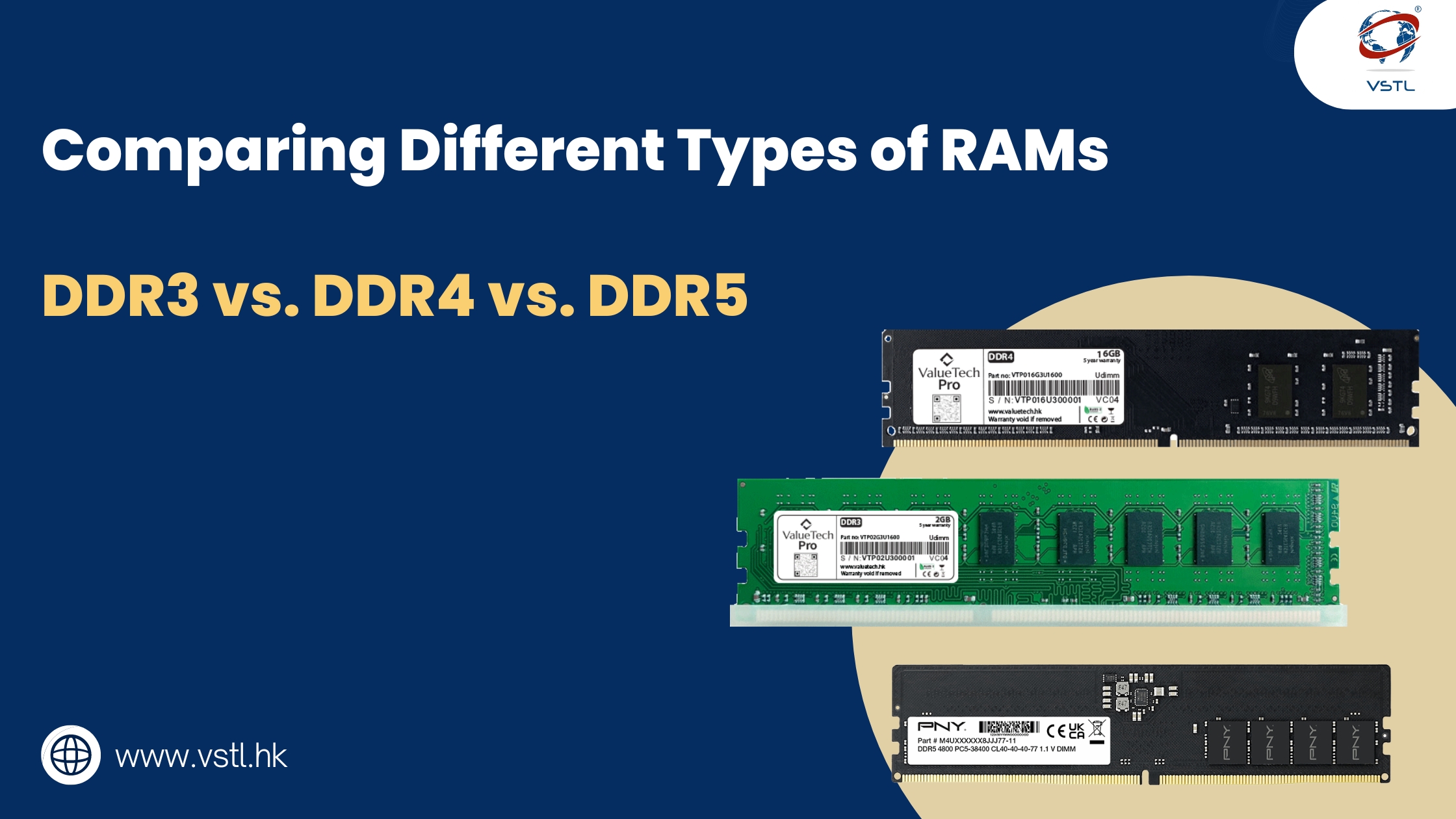
In the world of computer hardware, RAM (Random Access Memory) is like the short-term memory of your computer. It’s where your computer stores data that it needs to access quickly for active tasks. When it comes to choosing the right type of RAM for your system, you might have heard about DDR3, DDR4, and the newer DDR5. But what exactly are they, and how do they differ? Let’s break it down in simple terms.
Understanding DDR RAM
First things first, DDR stands for Double Data Rate. It refers to the way RAM transfers data, effectively doubling the amount of data transferred per clock cycle compared to older SDR (Single Data Rate) RAM. DDR has gone through several iterations, with DDR3, DDR4, and DDR5 being the most prominent versions used in modern computers.
DDR3 RAM
DDR3 RAM was the go-to choice for many years and is still found in many older systems. It has been around since the late 2000s and offers decent performance for everyday computing tasks. DDR3 typically operates at lower frequencies compared to newer versions, usually ranging from 800MHz to 2133MHz. It has a lower bandwidth compared to DDR4 and DDR5, meaning it can transfer less data per second.
DDR4 RAM
DDR4 RAM is the successor to DDR3 and brought several improvements in terms of speed and efficiency. It was introduced in 2014 and has become the standard for most modern systems. DDR4 RAM operates at higher frequencies, typically ranging from 2133MHz to 3200MHz, although higher speeds are also available. It offers higher bandwidth compared to DDR3, allowing for faster data transfer rates and improved system performance.
DDR5 RAM
DDR5 RAM is the latest iteration of DDR memory and promises even better performance and efficiency compared to DDR4. It was introduced in 2020 and is gradually making its way into newer systems. DDR5 RAM operates at even higher frequencies, with speeds starting from 4800MHz and expected to go even higher in the future. It offers significantly higher bandwidth compared to DDR4, making it ideal for demanding tasks such as gaming, content creation, and data processing.
Key Differences between DDR3, DDR4 And DDR5 RAMs
Now that we have a basic understanding of each type of RAM, let’s compare them based on some key factors:
1. Speed and Bandwidth: DDR4 and DDR5 RAM offer higher speeds and bandwidth compared to DDR3. This means they can transfer data more quickly, resulting in improved overall system performance.
2. Power Efficiency: DDR4 and DDR5 RAM are more power-efficient compared to DDR3. They operate at lower voltages, which can help reduce power consumption and heat generation, making them ideal for laptops and other portable devices.
3. Compatibility: DDR3, DDR4, and DDR5 RAM are not compatible with each other due to differences in physical and electrical specifications. You cannot use DDR4 or DDR5 RAM in a motherboard designed for DDR3, and vice versa.
4. Price: DDR3 RAM is generally more affordable compared to DDR4 and DDR5, mainly because it’s older and less in demand. DDR4 RAM prices have become more competitive over the years but are still slightly more expensive than DDR3. DDR5 RAM, being the latest technology, tends to be the most expensive option.
Which One Should You Choose?
Choosing the right type of RAM depends on your specific needs and budget. Here are some general guidelines:
1. If you have an older system that supports DDR3 and you’re on a tight budget, upgrading to DDR3 RAM can still provide a performance boost for basic computing tasks.
2. If you’re building a new system or upgrading an existing one, DDR4 RAM offers a good balance of performance and affordability for most users.
3. If you’re a power user or enthusiast who demands the highest performance possible, especially for gaming or content creation, investing in DDR5 RAM might be worth considering, although it comes at a higher cost.
Conclusion
In summary, DDR3, DDR4, and DDR5 RAM are all capable of providing varying levels of performance and efficiency. DDR4 is currently the most common choice for modern systems, offering a good balance of speed, power efficiency, and affordability. DDR5 represents the next evolution in RAM technology, offering even higher performance but at a higher cost. Ultimately, the choice between DDR3, DDR4, and DDR5 depends on your specific requirements and budget.
VSTL: Global Supplier of RAMs
VSTL is a global supplier, wholesaler and exporter of pulled and brand-new RAM of all major brands, including Samsung, Kingston, Crucial, Hynix, and Corsair. We offer a wide range of RAM in terms of capacity, speed, and type, including DDR2, DDR3, DDR4 and DDR5. We understand the importance of having fast and stable RAM for optimal system performance, and we are committed to providing our customers with the best possible RAM products and services.

